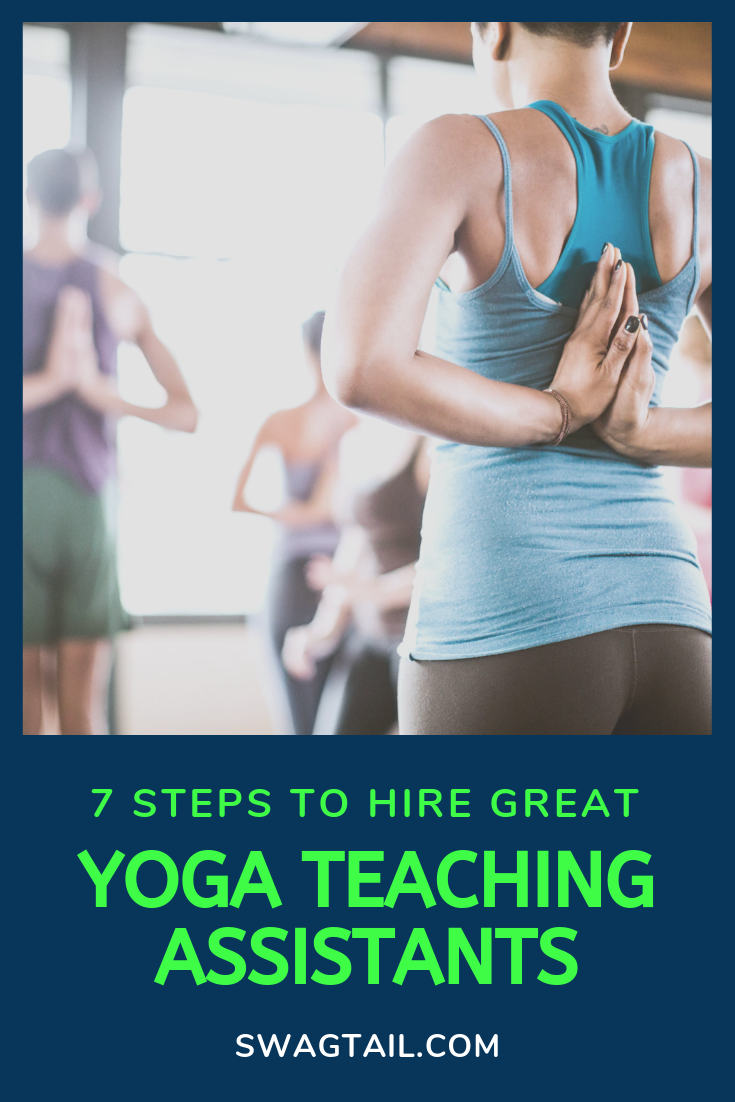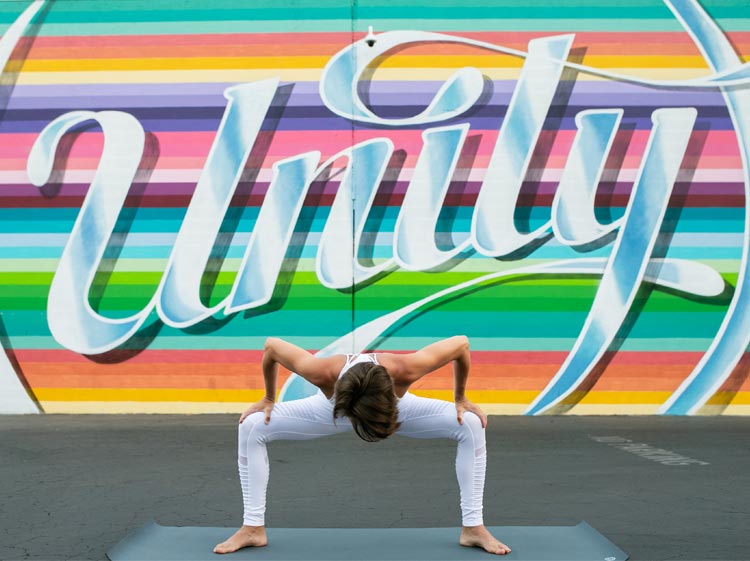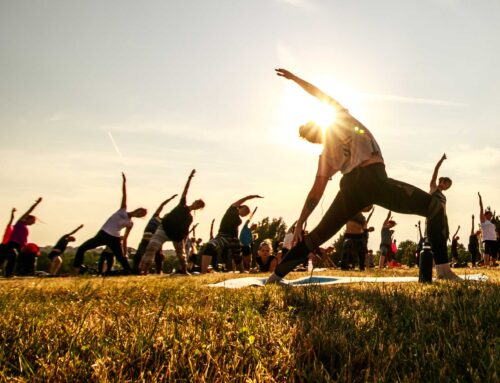 What would happen if you hired yoga teaching assistants for your teacher training program—to increase the number of students you could accommodate in one setting—and those assistants ignored your participants? What if those teaching assistants only chatted amongst themselves, constantly took photos for Instagram, and failed to ensure student safety during active yoga classes?
What would happen if you hired yoga teaching assistants for your teacher training program—to increase the number of students you could accommodate in one setting—and those assistants ignored your participants? What if those teaching assistants only chatted amongst themselves, constantly took photos for Instagram, and failed to ensure student safety during active yoga classes?
Would you keep them on board for your next yoga teacher training or workshop?
Believe it or not, I’ve been to yoga events where teaching assistants are aloof and disconnected. And instead of helping the teacher or studio or brand they’re working with, they detract from the power of the message being taught.
In this post, my goal is to shine a light on some simple steps you can take now to ensure you get the right yoga teaching assistants by your side. And believe it or not, that work starts with you! Your clarity of purpose with the event. Your foresight on group needs and logistical hiccups. And, your ability to craft an offer that creates a win-win-win for you, your teaching assistants, and the students you all will serve together.
Photo Credit: Ryan J Lane
ROLES OF A YOGA TEACHING ASSISTANT
Yoga teaching assistants have the ability to increase the number of students you serve well, and teach safely, in class. They can also increase the level of connection and caring your students feel when under your leadership.
The roles of a yoga teaching assistant can vary from program to program, workshop to workshop. I’ve attended large trainings where other qualified teachers aid the main facilitator with assists during group classes. And some studios with highly attended classes on a regular basis utilize teaching assistants as part of the added value they offer their community.
As a new yoga teacher, volunteering as a teaching assistant under a seasoned instructor you admire can be a great way to grow your skills. Those running teacher training programs can also benefit from the added help to manage and coordinate their groups. Plus, their unique skills can even be tapped for adjunct teaching modules.
With this wide array of what’s possible for the role of a yoga teaching assistant, it’s really important to start with Step 1.
STEP 1: START WITH WHY
The first step to working with a yoga teaching assistant begins long before you’re in front of a group. In fact, it starts with the very reason you might need them in the first place. As a leader, you will want to do what you love most and what you excel at naturally. Said another way, you will continue to build on your own strengths and bring in assistants where you have less skill or time to keep the quality of your training at a high level.
Once you have your role established, you can discover where there are gaps. Then, you’ll learn which types of people you will need to fill those holes. You could start with broad ideas first. This might include having teaching assistants:
- Engage with the trainees for support
- Be a “demo” during modules for assisting and asana curriculum
- Physically assist students during active yoga classes while the lead facilitator does the main teaching
- Set an example of presence and a yogic way of being
- Keep morale and energy high in the group
- Be a mentor to trainees
- Facilitate small group activities
Once you have your list of reasons they will be helping out, Then you want to decide how those actions will take place in a practical form.

STEP 2: LIST YOUR LOGISTICS
Now that you have a clear reason for bringing teaching assistants on board, let’s take a look at how those ideas turn into tangible responsibilities for them.
The best way to define the logistical aspects of their role will be to first answer the following questions:
- How many hours per day will they need to be assisting (active)?
- How many hours per day will they need to be present (passive or little activity)
- What will be the timeframes they are needed? (6 am – 12pm, or 7 am – 7pm)
- How often will they get breaks?
- Will they rotate with other yoga teaching assistants?
- Will there be meetings outside of the training time for staff? (this includes before, during, and after the event)
- If so, how often will those take place and how long will they last? (this includes before, during, and after the training)
There are also these responsibilities to consider:
- Will they need to know the training manual?
- Do you want them to arrive the day before the program starts?
- Leave a day after it ends?
- Would you want yoga teaching assistants to arrive early morning to set up for the day?
- Do you want them to greet and sign-in students for each session?
- Will they need to pack up, or clean, each night?
- What other staff or administration will they need to be in contact with to do their job well?
Photo Credit: Simon Maage
One quick story:
The reason I ask all of these questions is because of one interesting experience I had. At this event, there were many teaching assistants to help facilitate a group of about 100. A few times during the training, I had a question. When approaching any one of these individuals, they referred me to someone else.
This runaround was very frustrating, and many of my questions went unresolved. This could have been prevented if:
- the entire group knew who to seek with logistical questions, and
- that person was introduced to the group at the beginning of the week. That way a face would then be connected with a name.
For icing on the cake, the group could have been told where to find that person throughout the training. Think clear communication. And when in doubt, repeat that clear message over and over again!
STEP 3: CONSIDER YOUR COMPENSATION
Based on the roles and responsibilities you have for your yoga teaching assistants, it’s time to consider the compensation they will receive for their contribution.
As you make that decision, take into account:
- The number of hours they will be working.
- Whether a base rate or hourly one will be best
- Travel expense and accommodations. Will you pay these as well?
If you’re on a limited budget, you can always offer an exchange. Perhaps the workshop you’re teaching will further the education of those teaching assistants. Working with you can also be of benefit because it refines their own teaching skills, and it might be a great line-item on their resume moving forward.
The compensation might vary from position to position, and person to person. Just consider what is fair for all involved, as well as the going rate for the service they are providing you.
STEP 4: FORMALIZE A CONTRACT
Yoga is a practice, and profession, based on integrity. While you want trust to be the foundation for your business relationships, a written yoga contract can be an additional way to ensure this is the case. Plus, it’s a great way to prevent miscommunication or disappointment with your yoga teaching assistants.
I have another great article on 10 points to consider before signing a yoga contract. It focuses on working with independent contractors, and your yoga assistants might fall under that category for one-time or multiple events they teach with you. It will also encourage you to consider a few other details not mentioned here.
You can use it to help draft a yoga contract for your yoga teaching assistants. Then, with a template in place, you can move to STEP 5.

Photo Credit: Raw Pixel
STEP 5: EXTEND YOUR OFFER
This is the phase where you make your offer for assistance known to your studio, other instructors you know well, or even post an ad online. Then, with clear expectations set forth in advance, other teachers can decide if that role is right for them. They’ll know exactly what they are signing up for, and they can decide if it’s a commitment they can make at this time.
As you work out the details with those ready, willing, and able to come on board, you can fine-tune the contract you created in STEP 4.
STEP 6: UNIFY YOUR TEAM
Once you have your teaching team in place, it’s time to unify them around your mission. Yes, they have signed the paperwork that confirms they understand their role. But do they understand their role in the larger picture of the event? Do they understand the roles of others with whom they will be working? Most importantly, are they clear about your mission to serve your students?
Make sure that their answer to this is YES!
To do this, you can:
- Schedule 1-on-1 calls with them
- Coordinate your entire team together for a call, or many calls, leading up to the event
- Host an in-person meeting
- Schedule a meeting the day/night before the event begins
- Even hold regular gatherings throughout the training to make sure everyone is still on the same page
When you, and your entire team, share the same positive message (and priorities behind that message), your students will feel that sense of harmony. This cohesion can elevate their experience to levels they didn’t even know was possible!

Photo Credit: Diane Nicole Photography
STEP 7: INTRODUCE YOUR YOGA TEACHING ASSISTANTS
As you reach this last step of the process to work with other great yogis, there is one quote I want you to keep in mind:
“CLEAR IS KIND. UNCLEAR IS UNKIND.”
I utilized this phrase a few weeks back in reference to verbal cues when teaching. Yet, it’s equally as valuable in reference to how you utilize the role of yoga teaching assistants. Now that the yoga teaching assistants are clear about their roles, it’s time to let the students in on it, too.
At the beginning of your event, introduce your team. Don’t just inform the group of who these people are and why they’re highly qualified to be there. Tell the group–in simple terms–what the assistants are responsible for during your time together. This can save TONS of time and energy as the event moves forward–and will likely keep everyone happier in the process.
Other ideas:
Early introductions
Why wait until your group meets in person? You can always introduce your team in the series of emails you send to your workshop or training participants before they arrive. This will set a good foundation to help the staff and students bond when they do meet face-to-face.
Name tags
If you have a large group of trainees, then another option is to have the teaching assistants wear name tags. This can make them seem more approachable to your students.
Common apparel
You want your teaching students to stand out as an asset to your program. Perhaps have them wear similar colors or your branded studio tanks. Clothing can be another way to reinforce the unity–and professionalism–of your team.
PUTTING IT TOGETHER
Yoga teaching assistants can offset a large workload that accompanies running a yoga workshop or teaching training program. This can save you time and energy during big events. And, they can increase the capacity for your students to feel nurtured and supported on their own journey.
Yet, if clear roles are not established prior to working together, chaos can ensue. Students and staff can get confused. Or even worse, you could create a sense of alienation between your community due to unwanted actions of those teaching assistants and you (and your brand) could get sorely misrepresented.
Action Steps to Take Now
- Reflect on your encounters with teaching assistants (whether this occurred when you were in the student role, the hiring/lead teacher role, or the yoga teaching assistant role itself)
- Rate the clarity you have/had about those roles on a scale of 1-10. (1) Confused or unclear, (10) Totally clear and confident!
- List three ways in which you could improve your own communication with the teaching assistants you work with currently. Or, if you this is less relevant to you, think about how you can increase the clarity of your communication with your other business colleagues.
- Take action. Do one thing on your list above, and notice how that level of assertive communication increases the bonds in your relationships.









Leave A Comment